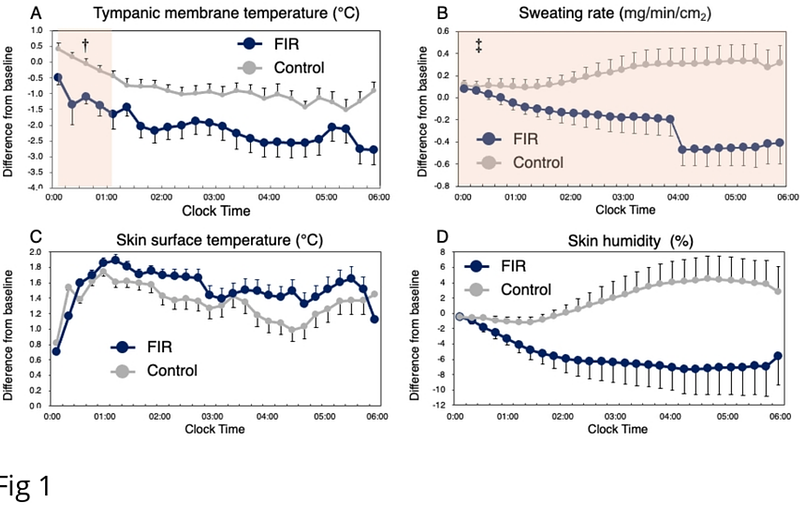Physiological Evaluation of Far Infrared-Emitting Garments on Sleep and Thermoregulation

Physiological Evaluation of Far Infrared-Emitting Garments on Sleep and Thermoregulation
Nishida, M.; Nishii, T.; Suyama, S.; Youn, S.; Funayama, K.
AbstractGarments engineered to emit far-infrared (FIR) spectral frequencies have potential conditioning benefits. This study aimed to explore the physiological effects of FIR-emitting clothes on sleep propensities involving thermoregulation and autonomic nervous function. In this double-blind, randomized, placebo-controlled, crossover study, fifteen healthy male participants (age 21.6 +/- 1.5 years, body mass index 23.1 +/- 1.9, Pittsburgh Sleep Quality Index 5.0 +/- 2.0) wore a whole-body FIR garment (wavelength: 5-20 um at 40 degrees C), while a total body garment with the 100% polyester fiber without ceramic components was used as control for the intervention. To compare the physiological variables between the two electroencephalograms, the tympanic membrane temperature, sweating rate, skin temperature, and humidity were measured during sleep. Heart rate variability during sleep was also calculated. The percentage of rapid eye movement (REM) sleep was significantly higher in the FIR compared than in control (p = 0.027). We found a significant main effect of tympanic membrane temperature in time, equivalent to core body temperature. (2-way ANOVA; (F(26, 234)=4.046, p<0.001). Furthermore, the sweating rate was significantly lower when sleeping with FIR predominantly in the final phase of sleep (garment times; time interaction (F(26,572)=55.05, p<0.001). Although there were no significant differences in skin surface temperature between the two garments, FIR provided significantly lower skin humidity during the middle of night sleep compared with the control. Regarding LF, a significant garment type x time interaction (F(1.87, 48.57)=3.36, p=0.046). Post-hoc analysis revealed that the LF value of FIR was higher in the final phase of sleep than that of control (p=0.027). Then present results suggest that sleeping with FIR in comparison to with control, has a beneficial effect to facilitate restorative sleep, presumably involving proper thermoregulation.


